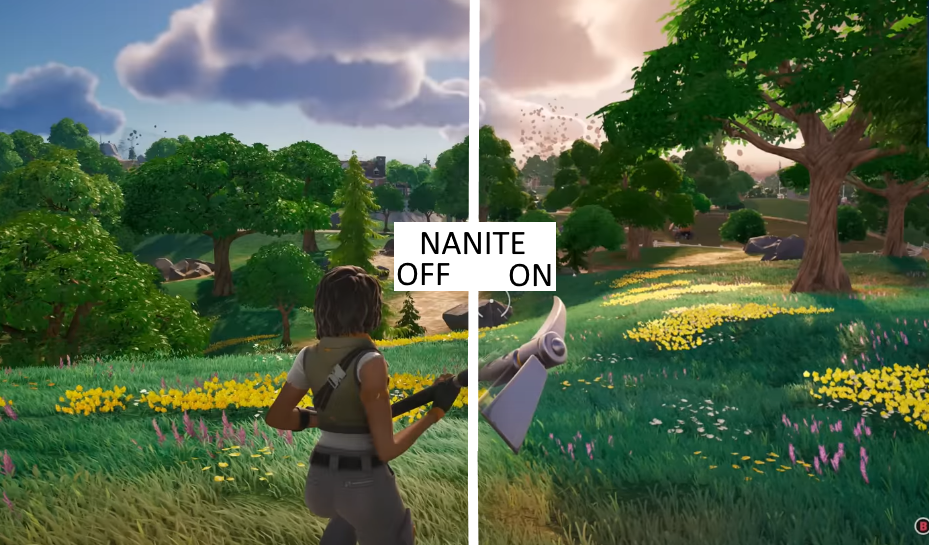Nanite is a new rendering technology in Unreal Engine 5 (UE5) developed by Epic Games. Nanite allows for the import and display of high-fidelity 3D models without the need for polygon reduction. In other words, it allows for the use of 3D models with a high number of polygons without worrying about having to reduce them for performance optimization.
In addition, Nanite uses artificial intelligence (AI) to analyze 3D models in real-time and automatically choose the level of detail to be displayed based on the distance of the object from the camera. This means that distant objects will be displayed with less detail compared to closer objects, allowing for greater efficiency without sacrificing visual quality.

Nanite is a very powerful feature that can offer unparalleled visual quality in UE5 and represents a significant step forward from the rendering technologies used in UE4 and other graphics engines (among other improvements made).
What is Nanite in brief?
Nanite is the system in Unreal Engine 5 that allows you to import and display high-fidelity 3D models without the need for polygon reduction using LOD (Level of Details), that is, by manually creating simplified versions of the 3D model, but through real-time simplification of models based on the distance from the camera that is rendering the scene.
What is Polygon reduction?
Polygon reduction, also known as mesh simplification, is a process of reducing the number of polygons in a 3D model while maintaining as much of its original form and detail as possible. This is often done to improve the performance of the model in games or other applications that require real-time rendering of 3D graphics. Polygon reduction algorithms typically analyze the model and identify areas where the number of polygons can be reduced without significantly affecting the overall shape or appearance of the model. The resulting simplified model will have fewer polygons and will be easier to render, but may not be as detailed as the original model.
In which way Polygon reduction differs from LOD (Level of Details)?
Polygon reduction, also known as polygon decimation or triangle reduction, is a process in which the number of polygons in a 3D model is reduced while maintaining the overall shape and appearance of the model as much as possible. This is typically done to optimize the performance of the model in a 3D application or game engine, as a large number of polygons can significantly increase the workload on the graphics processing unit (GPU).
Level of detail (LOD) refers to the level of detail in which an object is displayed in a 3D application or game. LOD is used to optimize performance by decreasing the detail of an object as it gets farther from the camera, or when it is viewed from a distance. This can help to reduce the workload on the GPU and improve the overall performance of the application or game.
While polygon reduction and LOD both serve the purpose of optimizing performance in 3D applications, they differ in the way they are implemented. Polygon reduction requires manually creating simplified versions of the 3D model with a single click, while LOD uses predefined versions of the model at different levels of detail that must be modeled one by one.
Are there other game engines with similar technologies?
As of today, it is a technology only present in Unreal Engine 5.
When should you use Nanite?
If by any chance the mesh really stresses the hardware, for example if it has too many triangles or too many instances are used.